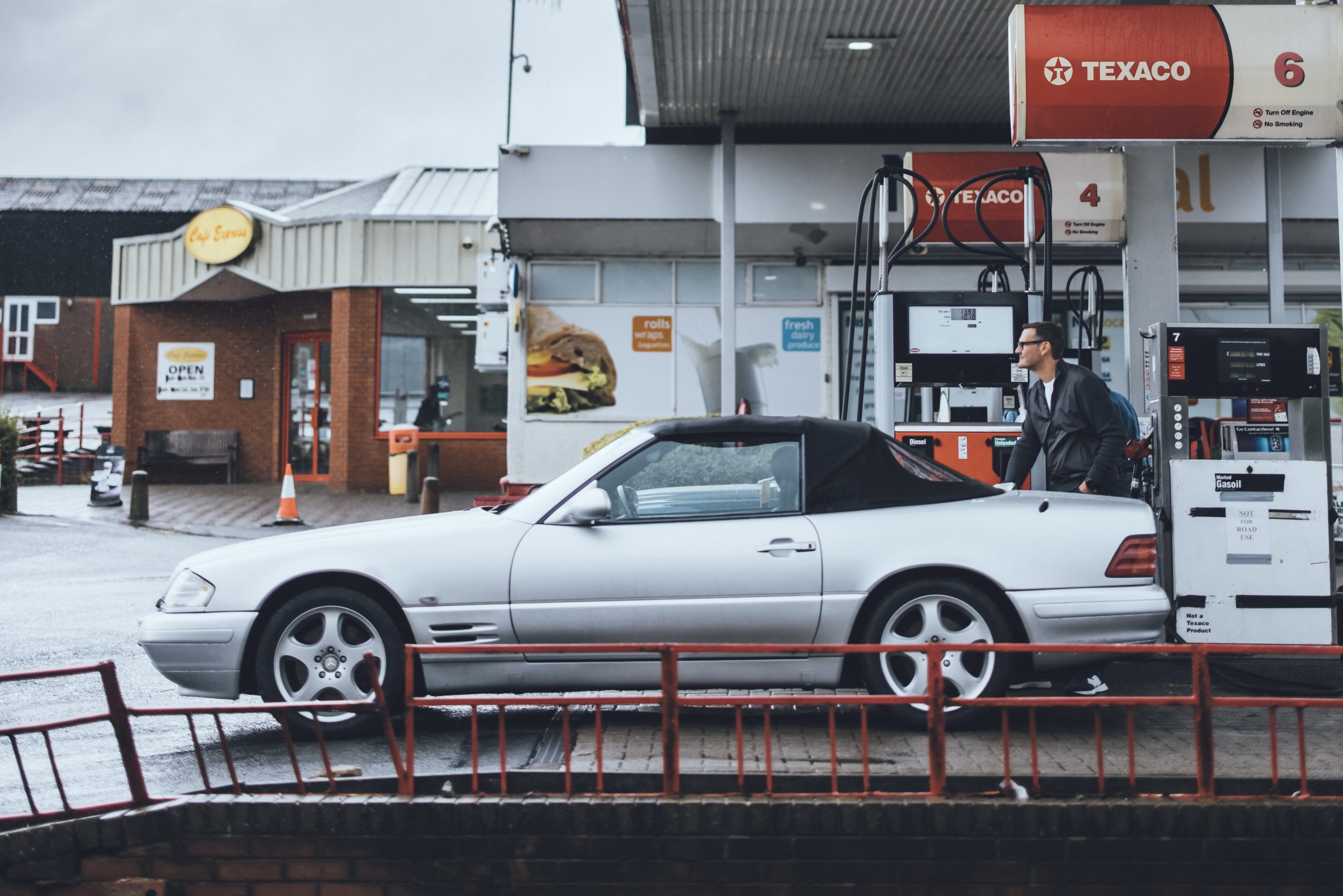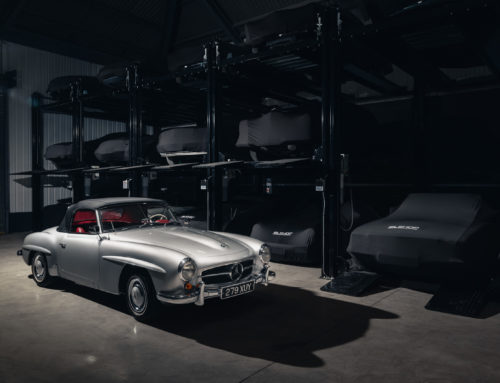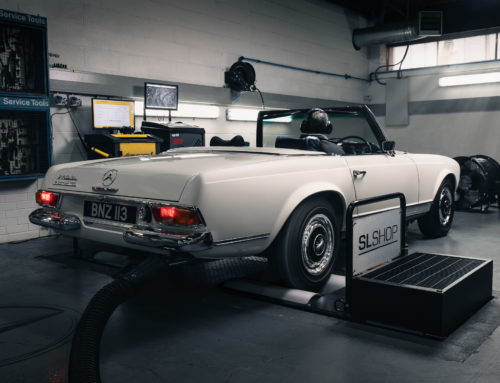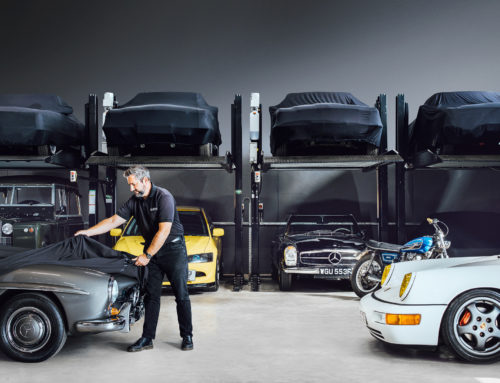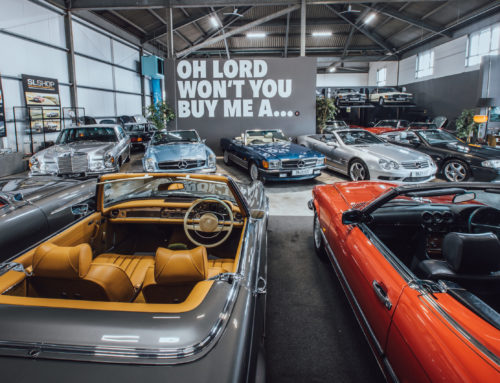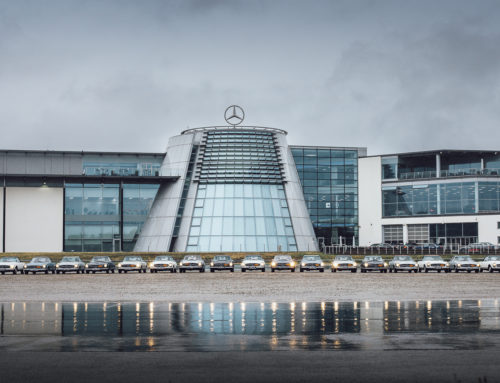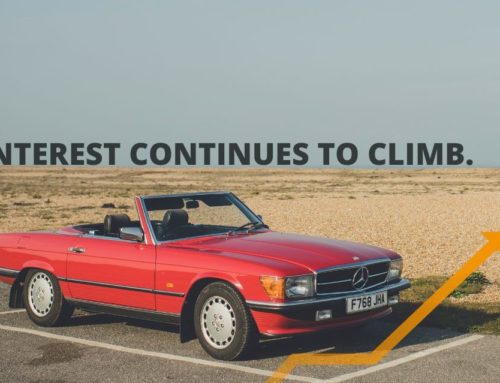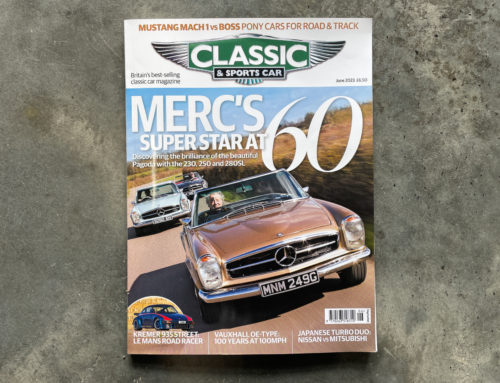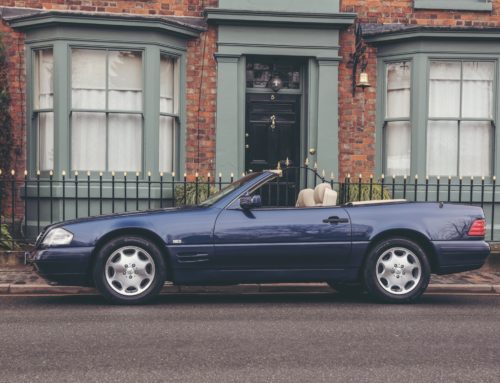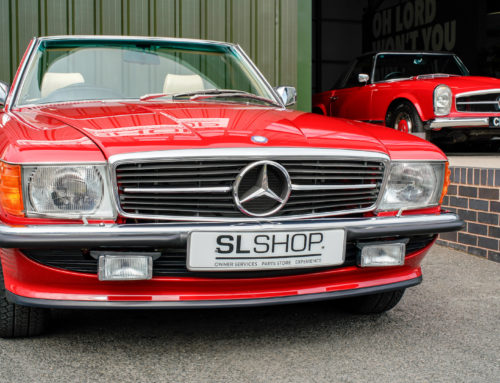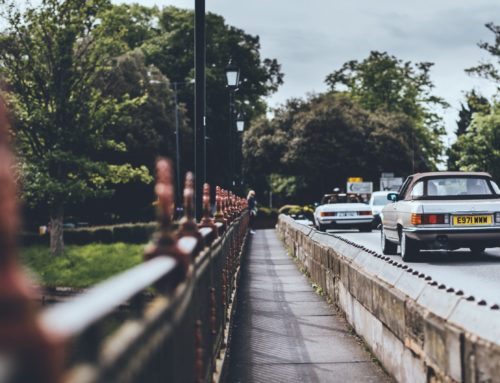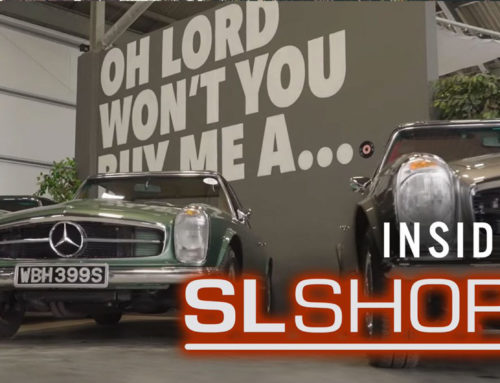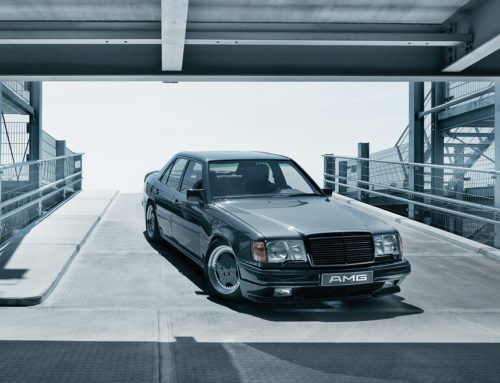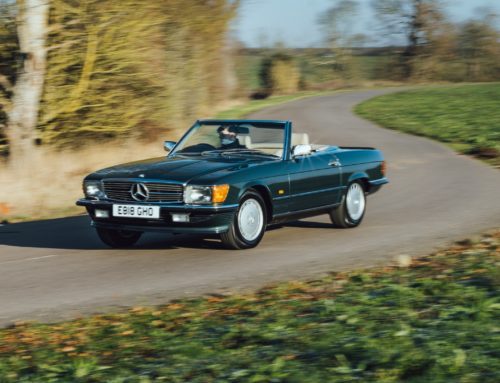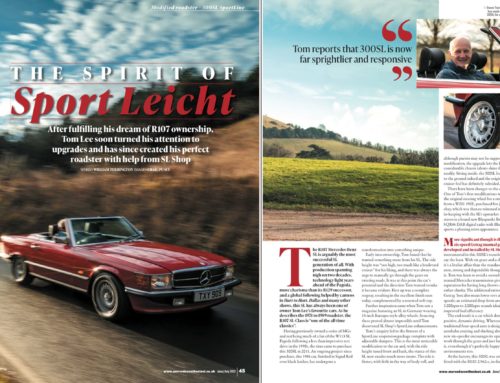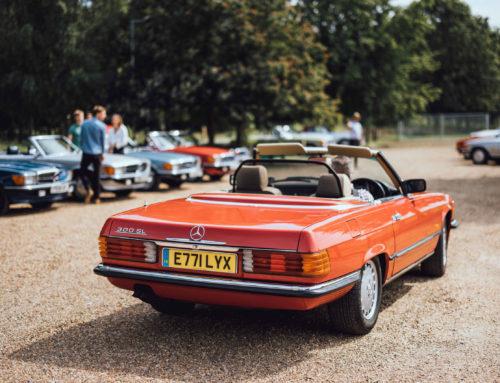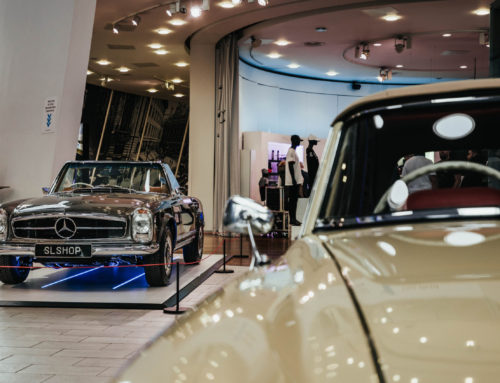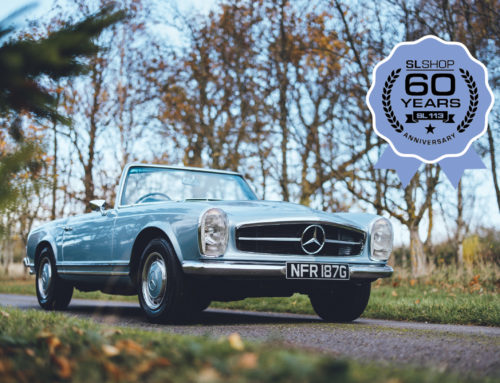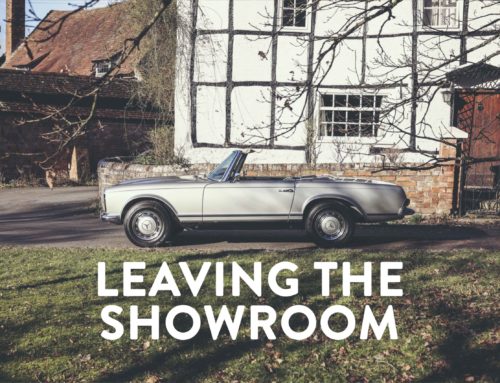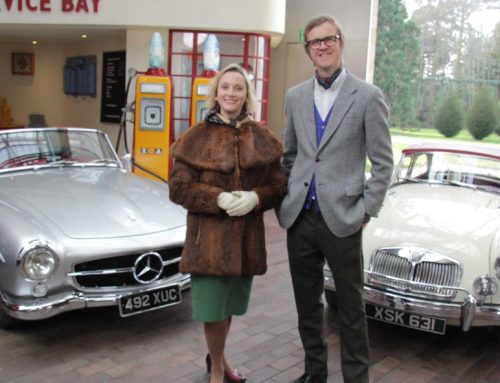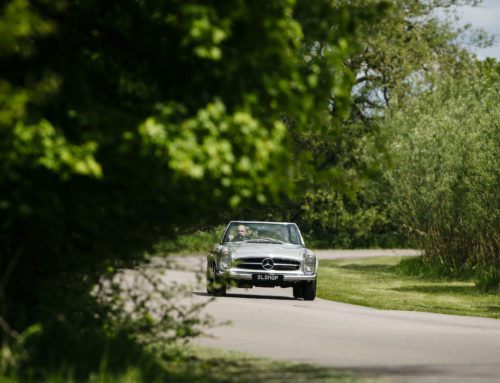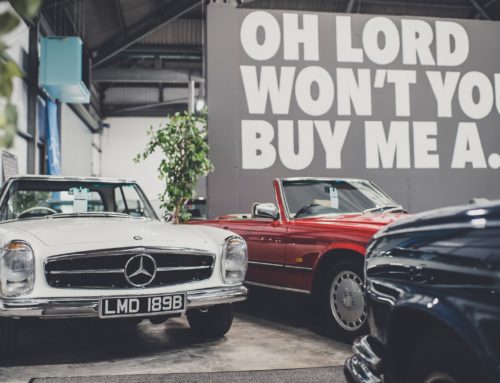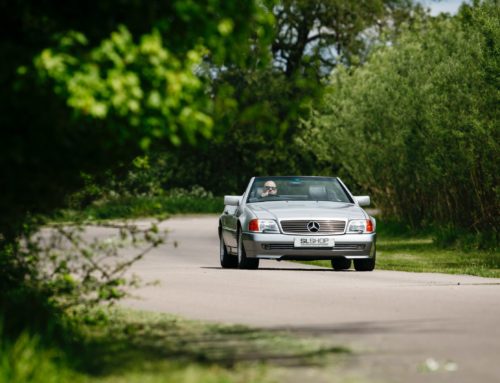London’s controversial low emission zone – and others like it – look to exclude modern classic Mercedes-Benz models from our cities. But is it really all doom and gloom or are there some work arounds?
- What is ULEZ and how could it affect me?
- Why has government deployed low emission zones?
- Which classic Mercedes-Benz SLs are compliant & non-compliant?
- Tips to get avoid the charge; if you own a late R129 SL
- What are my options if my car doesn’t currently comply?
First things first, the implementation of London’s Ultra Low Emission Zone (ULEZ) in 2019 has been controversial. Far beyond its impact on car fans within the M25 – don’t worry we’ll get to that – are the weighty political connotations of the scheme, devised to improve air quality within the capital. It’s not just London either, as similar zones are either currently operating – or about to go live – all over the UK, with more likely on the way.
If you haven’t kept pace with the countless tabloid stories and protests, the most obvious indication of the contentiousness of ULEZ came earlier this year from London voters. A 46.2% turnout in the July 2023 Uxbridge and South Ruislip by-election confirmed Tory candidate Steve Tuckwell as its MP. The seat was thought to be an open goal for a Labour victory, following the former MP and Prime Minister Boris Johnson’s resignation in the wake of the ‘partygate’ scandal. However, the seat was retained with a slim 495-vote Tory majority.
“I don’t think there’s any doubt that ULEZ is the reason we lost the by-election,” admitted Labour leader Sir Keir Starmer, during a Sky News interview. The implementation of any plan that affects a large percentage of the owners of London’s 2.56million cars was always going to play a huge roll in any election. Separating the political from the practical comes with the territory with ULEZ so, before we set the former aside, it’s worth finally mentioning that although current Labour mayor Sadiq Khan gets the brunt of ULEZ vitriol, he’s merely expanding on the concept initiated by the previous London mayor, Boris Johnson.
In case you’re somehow not aware, ULEZ is London’s Ultra Low Emission Zone. It’s a virtual boundary that currently represents the largest ‘clean’ air zone in the world. Its expansion on August 29th 2023 saw it encompass all 32 London boroughs, in many of these, stretching as far as (though not including) the M25. If a vehicle doesn’t meet strict emission criteria (Euro 4 petrol or Euro 6 diesel) it’s not permitted to drive within the Zone – that applies 24-hours a day, all-year round, apart from Christmas Day – without its owner paying £12.50 a day for the privilege.
What this meant for the owners of the estimated 700k non-compliant cars (BBC News) within the expansion Zone, back in August, was a choice. Either they had to find an alternative secondhand car that met the new criteria (during a record peak in used-car prices), buy a new car using the £2000 government incentivised scrappage scheme, or put up with paying to drive in London. Unsurprisingly, this expansion of the Zone saw a vast number of non-compliant cars sold out of the capital, many modern classic Mercedes-Benz SL models among them. Good news for those of us outside the M25, not so much for the thousands of car fans within it.
The reason for all the upset has, of course, been cited as environmental, though the more cynical out there might also note the Zone’s generation of £26million in its first month, with a projected £300m by year’s end (figures from the Evening Standard & Fleet News). In the interest of balance however, we should also point out that the Greater London Authority has predicted net revenue should stop by 2027, also guaranteeing that: “net revenue raised by the ULEZ is guaranteed to be invested in improving the transport network in London,” (london.gov.uk).
Trying to clean up our transport sector has been a long term and lauded goal of successive governments. European emission standards have been around since 1970, but took a huge leap in stringency with the introduction of Euro 1, back in 1992. This ensured all new cars met an agreed minimum standard of engine emissions, which coincided with the introduction of catalytic converters and the gradual removal of leaded petrol; both of which have been heralded as major contributors to cleaner air and better public health.
By 2006, we’d reached Euro 4, with all new petrol cars having to emit no more than 1.0g/km of carbon monoxide 0.10g/km of hydrocarbons and 0.08g/km of nitrogen oxides. Diesel emissions, which have been linked to more serious public health risks, have to meet Euro 6 legislation to be ULEZ compliant. Exhaust output for compression-ignition powered cars cannot exceed 0.50 g/km of carbon monoxide, 0.17 g/km for both hydrocarbons and nitrogen oxides, 0.08 g/km of nitrogen oxide alone and 0.005 g/km and 6.0×10 ^11/km for particulate matter.
Handily, there’s a government online tool that checks if your vehicle is ULEZ compliant. You just input your registration and wait for the computer to say yay or nay? Simple enough right? Well, not quite… The online checker is far from comprehensive, with its broad classification for compliant cars being based on little more than those powered by petrol engines made from 2006 and diesels manufactured from 2015. In reality however, many makers are given advance notice of upcoming emission law changes, allowing them to make strides towards complicity, long before it becomes law.
Mercedes-Benz was one such manufacturer, meaning that there’s a good chance your early-Noughties or even late-Nineties Benz could actually emit emissions that fall within the ULEZ requirement. The issue is proving that with a method Transport for London (TfL) will accept.
It all comes down to whether or not your late Mercedes-Benz was tested to Euro 3 standard (likely post-2000) from the factory. Despite ULEZ requiring Euro 4 or newer, the figures for NOx emissions are what matter here, with many Euro 3 tested SLs for example recorded as under the subsequent Euro 4 threshold. Though we can by no means guarantee your late R129 will pass ULEZ scrutiny, it’s well worth checking the car’s yellow sheet in its original documents and getting a Certificate of Conformity (CoC) from the Mercedes-Benz Homologation department https://homologation.mercedes-benz.com
According to Mercedes-Benz, only final year (2001) SL 500 R129s are officially ULEZ compliant, backed up by the same advice from the Mercedes-Benz Owners’ Club. However, there have been other reports online of owners of late model R129s also meeting the ULEZ emission standards. We’ve received word from two of our customers with a late SL 500 (2000) and SL 320 (2001) both gaining exemption by following the process of getting the CoC from the manufacturer to prove the car’s Euro 3 credentials and presenting the subsequent compliant NOx figure to TfL. Both commented that the process was relatively quick and straightforward. Well worth a try before you resign yourself to selling your beloved SL.
It’s not all bad news then. Even if your car doesn’t currently comply, it’s worth remembering that all R230 SLs are compliant with the current rules, as are pre-1983 built R107s; though the latter still require a successful ‘historic vehicle’ tax class registration with the DVLA. With exemption rolling each year, it might simply mean storing your SL in the meantime, something we can certainly help you with. Proof of being ULEZ compliant in the history folder also won’t hurt your SL’s desirability or value in the long term.
With all of the above in mind, this limits the damage of the ULEZ expansion to newer R107s and early R129s. It could have been better, but it’s far from the worst-case scenario some old car fans have found themselves in. If you’ve gained a ULEZ pass for your SL, please let us know, as it allows us to better inform our customers of the likely outcome of their own applications.
London’s controversial low emission zone – and others like it – look to exclude modern classic Mercedes-Benz models from our cities. But is it really all doom and gloom or are there some work arounds?
- What is ULEZ and how could it affect me?
- Why has government deployed low emission zones?
- Which classic Mercedes-Benz SLs are compliant & non-compliant?
- Tips to get avoid the charge; if you own a late R129 SL
- What are my options if my car doesn’t currently comply?
First things first, the implementation of London’s Ultra Low Emission Zone (ULEZ) in 2019 has been controversial. Far beyond its impact on car fans within the M25 – don’t worry we’ll get to that – are the weighty political connotations of the scheme, devised to improve air quality within the capital. It’s not just London either, as similar zones are either currently operating – or about to go live – all over the UK, with more likely on the way.
If you haven’t kept pace with the countless tabloid stories and protests, the most obvious indication of the contentiousness of ULEZ came earlier this year from London voters. A 46.2% turnout in the July 2023 Uxbridge and South Ruislip by-election confirmed Tory candidate Steve Tuckwell as its MP. The seat was thought to be an open goal for a Labour victory, following the former MP and Prime Minister Boris Johnson’s resignation in the wake of the ‘partygate’ scandal. However, the seat was retained with a slim 495-vote Tory majority.
“I don’t think there’s any doubt that ULEZ is the reason we lost the by-election,” admitted Labour leader Sir Keir Starmer, during a Sky News interview. The implementation of any plan that affects a large percentage of the owners of London’s 2.56million cars was always going to play a huge roll in any election. Separating the political from the practical comes with the territory with ULEZ so, before we set the former aside, it’s worth finally mentioning that although current Labour mayor Sadiq Khan gets the brunt of ULEZ vitriol, he’s merely expanding on the concept initiated by the previous London mayor, Boris Johnson.
In case you’re somehow not aware, ULEZ is London’s Ultra Low Emission Zone. It’s a virtual boundary that currently represents the largest ‘clean’ air zone in the world. Its expansion on August 29th 2023 saw it encompass all 32 London boroughs, in many of these, stretching as far as (though not including) the M25. If a vehicle doesn’t meet strict emission criteria (Euro 4 petrol or Euro 6 diesel) it’s not permitted to drive within the Zone – that applies 24-hours a day, all-year round, apart from Christmas Day – without its owner paying £12.50 a day for the privilege.
What this meant for the owners of the estimated 700k non-compliant cars (BBC News) within the expansion Zone, back in August, was a choice. Either they had to find an alternative secondhand car that met the new criteria (during a record peak in used-car prices), buy a new car using the £2000 government incentivised scrappage scheme, or put up with paying to drive in London. Unsurprisingly, this expansion of the Zone saw a vast number of non-compliant cars sold out of the capital, many modern classic Mercedes-Benz SL models among them. Good news for those of us outside the M25, not so much for the thousands of car fans within it.
The reason for all the upset has, of course, been cited as environmental, though the more cynical out there might also note the Zone’s generation of £26million in its first month, with a projected £300m by year’s end (figures from the Evening Standard & Fleet News). In the interest of balance however, we should also point out that the Greater London Authority has predicted net revenue should stop by 2027, also guaranteeing that: “net revenue raised by the ULEZ is guaranteed to be invested in improving the transport network in London,” (london.gov.uk).
Trying to clean up our transport sector has been a long term and lauded goal of successive governments. European emission standards have been around since 1970, but took a huge leap in stringency with the introduction of Euro 1, back in 1992. This ensured all new cars met an agreed minimum standard of engine emissions, which coincided with the introduction of catalytic converters and the gradual removal of leaded petrol; both of which have been heralded as major contributors to cleaner air and better public health.
By 2006, we’d reached Euro 4, with all new petrol cars having to emit no more than 1.0g/km of carbon monoxide 0.10g/km of hydrocarbons and 0.08g/km of nitrogen oxides. Diesel emissions, which have been linked to more serious public health risks, have to meet Euro 6 legislation to be ULEZ compliant. Exhaust output for compression-ignition powered cars cannot exceed 0.50 g/km of carbon monoxide, 0.17 g/km for both hydrocarbons and nitrogen oxides, 0.08 g/km of nitrogen oxide alone and 0.005 g/km and 6.0×10 ^11/km for particulate matter.
Handily, there’s a government online tool that checks if your vehicle is ULEZ compliant. You just input your registration and wait for the computer to say yay or nay? Simple enough right? Well, not quite… The online checker is far from comprehensive, with its broad classification for compliant cars being based on little more than those powered by petrol engines made from 2006 and diesels manufactured from 2015. In reality however, many makers are given advance notice of upcoming emission law changes, allowing them to make strides towards complicity, long before it becomes law.
Mercedes-Benz was one such manufacturer, meaning that there’s a good chance your early-Noughties or even late-Nineties Benz could actually emit emissions that fall within the ULEZ requirement. The issue is proving that with a method Transport for London (TfL) will accept.
It all comes down to whether or not your late Mercedes-Benz was tested to Euro 3 standard (likely post-2000) from the factory. Despite ULEZ requiring Euro 4 or newer, the figures for NOx emissions are what matter here, with many Euro 3 tested SLs for example recorded as under the subsequent Euro 4 threshold. Though we can by no means guarantee your late R129 will pass ULEZ scrutiny, it’s well worth checking the car’s yellow sheet in its original documents and getting a Certificate of Conformity (CoC) from the Mercedes-Benz Homologation department https://homologation.mercedes-benz.com
According to Mercedes-Benz, only final year (2001) SL 500 R129s are officially ULEZ compliant, backed up by the same advice from the Mercedes-Benz Owners’ Club. However, there have been other reports online of owners of late model R129s also meeting the ULEZ emission standards. We’ve received word from two of our customers with a late SL 500 (2000) and SL 320 (2001) both gaining exemption by following the process of getting the CoC from the manufacturer to prove the car’s Euro 3 credentials and presenting the subsequent compliant NOx figure to TfL. Both commented that the process was relatively quick and straightforward. Well worth a try before you resign yourself to selling your beloved SL.
It’s not all bad news then. Even if your car doesn’t currently comply, it’s worth remembering that all R230 SLs are compliant with the current rules, as are pre-1983 built R107s; though the latter still require a successful ‘historic vehicle’ tax class registration with the DVLA. With exemption rolling each year, it might simply mean storing your SL in the meantime, something we can certainly help you with. Proof of being ULEZ compliant in the history folder also won’t hurt your SL’s desirability or value in the long term.
With all of the above in mind, this limits the damage of the ULEZ expansion to newer R107s and early R129s. It could have been better, but it’s far from the worst-case scenario some old car fans have found themselves in. If you’ve gained a ULEZ pass for your SL, please let us know, as it allows us to better inform our customers of the likely outcome of their own applications.
More from Journal
CARE
THE ULTIMATE CERTIFIED SERVICING INVESTMENT PLAN
Your ownership journey matters to us, which is why we have created a simple certified servicing investment plan, tailored to your individual needs and aspirations.
Start investing today and our dedicated CARE team will work with you to increase the value and enjoyment you receive from your vehicle.

STAY IN TUNE WITH SLSHOP MOMENTS
As part of SLSHOP’s community of enthusiasts, you’ll be the first to hear about events and tours, key product offers, exciting stories from owners around the world and of course… our latest additions to the showroom. So, be the first to know and you might just sneak a car on your driveway or take your car’s condition to new heights with our exclusive replacement parts.
Or, visit SLSHOP Journal
